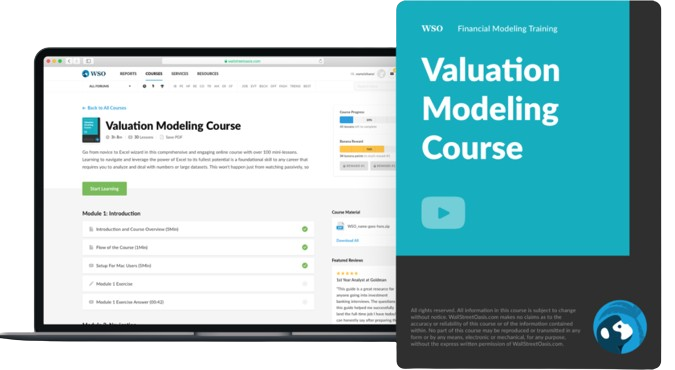Equity Research Report
These reports serve as comprehensive summaries that investors or company leaders may utilize to make informed decisions.
What is an equity research report?
An equity research report is a thorough analysis of a company's stock or securities written by research teams or financial analysts. It offers insights and detailed information about the stock.
Investors, fund managers, and other financial professionals use these reports, which are usually generated by brokerage firms, investment banks, or independent research organizations, to help them make well-informed investment decisions.
The main goal of equities research reports is to provide investors and hedge fund managers with market information and investment suggestions. However, forward-thinking companies also understand how important this information is when making strategic choices for their own operations.
Equity research analysts are usually highly skilled individuals with knowledge of many industries. Their credentials as seasoned industry executives, professors, or previous CEOs typically enable them to offer authoritative viewpoints and in-depth analyses of firms, industries, and macroeconomic trends.
Sell-side firms produce equity research reports covering thousands of publicly traded businesses. Bigger firms, such as Morgan Stanley and Bank of America, have hundreds of analysts who cover different industries and offer in-depth analyses of various businesses.
Because they provide in-depth information about the company, its rivals, and its performance in relation to the market, equity research reports are beneficial for businesses.
By using this information, businesses may maintain their competitiveness and make well-informed decisions that support their strategic goals.
Key Takeaways
- Equity research reports provide detailed analysis and insights into stocks or securities, aiding investors, fund managers, and businesses in making informed decisions.
- Reports vary in format, covering company-specific, sector, thematic, geographic, event-driven, quantitative, technical analysis, and economic/market outlook perspectives.
- Typical sections of the report include recent results, upgrades/downgrades, management commentary, industry overview, financial history, valuation, recommendations, and more.
- Reports serve various purposes, including investment decisions, portfolio management, valuation, strategic decision-making, regulatory compliance, investor relations, and education.
Understanding the Equity Research report
A document made by an equity research analyst gives suggestions on how an investor should act upon a company that is being traded. This could include holding the share, selling it, or purchasing it.
An analyst outlines their recommendation, target price, investment thesis, value, and risks in an equities research report.
The format of equity research reports might vary based on the objective, target audience, and level of analysis. These are a few typical formats:
1. Company-specific Reports
These reports analyze stocks of specific firms. They usually include detailed financial analyses, valuation indicators, investment suggestions, and perceptions of company-specific elements, including management caliber, competitive positioning, and growth potential.
2. Sector Reports
Sector reports offer insights and analysis on certain economic sectors or entire industries. They look at possibilities, problems, and trends in a particular industry as well as the state of play and future prospects of major players in that field.
Sector reports may address more general market trends impacting the sector and frequently compare various companies within the industry.
3. Thematic Reports
These types of reports center on particular investment topics or trends that are anticipated to influence the market's performance. They examine how various industries and businesses are impacted by themes like developing technologies, demographic shifts, and regulatory changes.
Note
Based on the themes found, thematic reports frequently offer investment advice.
4. Geographic Reports
These reports examine businesses or sectors operating in a particular market or geographic area. These papers offer insights into local economic situations, legal frameworks, and cultural aspects that can influence investment prospects, with an emphasis on global, regional, or national markets.
5. Event-driven Reports
These types of reports concentrate on particular occurrences or triggers, including earnings releases, mergers and acquisitions, court rulings, or new product introductions, that may affect a company's stock price.
After analyzing the event's possible effects on the company's financial performance, these reports offer investment recommendations based on the anticipated outcome.
6. Quantitative Reports
Quantitative reports employ quantitative research techniques, including statistical modeling and data analysis, to find investment possibilities or market trends. To bolster their analysis, these reports could contain quantitative measures, graphs, and charts.
Note
Quantitative Reports are frequently appealing to investors who want to make decisions based on data.
The primary goal of technical analysis reports is to find patterns and trends in stock prices by examining historical price and volume data. These reports forecast future market movements and trading opportunities using charting techniques and technical indicators.
Traders and investors who incorporate technical analysis into their investment plans could find technical analysis reports interesting.
8. Economic and Market Outlook Reports
These papers analyze and project macroeconomic variables, market patterns, and geopolitical developments that may affect the stock market as a whole. They might provide information on GDP growth, interest rates, inflation, and other economic variables that influence investment choices.
Contents of an Equity Research Report
An equity research report typically includes in-depth industry research, management analysis, financial history, trends, projections, valuations, and investor recommendations.
This kind of report, also known as broker research or investment research report, is intended to offer a thorough overview that investors or business executives may use to make informed judgments.
Here is a summary of what a typical report includes:
1. News & announcements of recent results
This section offers information on recent outcomes, including quarterly earnings, predictions, and general business updates, to help investors stay current on the company's performance.
2. Upgrades/Downgrades
Upgrades and downgrades are modifications to an analyst's forecast for the price of a specific stock. These revisions are often prompted by qualitative and quantitative studies that affect the security's financial valuation, either positively or negatively.
3. Revisions to the Estimate/Price Target
Estimates are detailed forecasts of how much a firm will make over the next few years. Price targets are derived from valuations of those earnings predictions.
Note
The price target is based on fundamentals and future supply and demand forecasts for the asset.
4. A summary of Management & Commentary
Potential investors might read the Management Overview and Commentary to learn more about the caliber and makeup of a company's management team.
This section can also include a history of the company's leadership, including its track record with capital allocation, ESG, remuneration, incentives, and stock ownership, as well as a description of the firm's directors.
5. Industry Overview
This section discusses the firm's sector, rivals, and industry developments. In addition, industry research covers politics, economics, social trends, technical innovation, and more.
6. Financial Result History
Historical Financial Results often include a company's stock history and projections based on the present market and external factors.
Note
Analysts must thoroughly comprehend the history of a certain sector and look for patterns or trends to support their recommendations. They must also judge whether a firm is performing at or above market expectations.
7. Valuation
A market analyst will perform stock valuation models using information such as previous financial data and market analysis. Analysts may use more than one valuation model to calculate the value of a company's shares or assets.
Absolute valuation models determine a business or asset's intrinsic worth. Relative equity valuation methods determine how much one firm or asset is worth in relation to another. Price/sales, Price/earnings, and Price/cash flow are the foundations for relative values.
8. Recommendations
A buy, hold, or sell recommendation made by a stock research analyst. The analyst will also provide investors with a target price that indicates where they anticipate the stock to be in a year.
Uses of Equity Research Report
Equity research reports have several significant uses for different financial market participants:
1. Making Investment Decisions
Investors rely on equities research reports to make well-informed choices regarding purchasing, disposing of, or retaining stocks. These reports offer insightful analysis and useful information about the risks, growth potential, valuation, and financial performance of certain businesses, sectors, or market trends.
To create and oversee investment portfolios, portfolio managers consult equities research reports.
These reports help them diversify their portfolios across various sectors and industries, find appealing investment possibilities, and adjust their holdings in response to shifting market conditions and investing goals.
Note
Equity research reports help investors assess the risks associated with potential investments. Analysts analyze various factors, including financial metrics, industry dynamics, competitive positioning, and macroeconomic trends, to identify potential risks and uncertainties that may impact a company's future performance and stock price.
3. Valuation
Equity research reports provide insights into the valuation of individual stocks or entire sectors.
Analysts use various valuation methodologies, such as discounted cash flow (DCF), comparable company analysis (CCA), and precedent transactions analysis (PTA), to estimate a company's intrinsic value and assess its potential upside or downside.
4. Strategic Decision Making
Corporate executives and management teams consult equity research reports to learn about their own businesses, industry competitors, and market trends.
They may make strategic decisions about business operations, capital allocation, and growth plans with the aid of these reports, which also help them comprehend investor perceptions and pinpoint areas for improvement.
5. Regulatory Compliance
Regulations, including those set down by stock exchanges and securities regulators, apply to equity research reports.
Note
Analysts must follow disclosure standards, transparency rules, and conflict-of-interest policies when writing and disseminating research findings to ensure compliance with regulatory requirements and preserve market integrity.
6. Investor Relations
These reports are a common tool used by businesses in their investor relations campaigns to reach out to analysts, shareholders, and prospective investors.
They cover the company's business strategy, financial performance, growth prospects, and strategic goals in great detail, which contributes to investor confidence and capital attraction.
7. Educational Purposes
They are used for educational purposes by professionals, investors, and students who want to learn about investment analysis, financial markets, and market trends.
They assist people in improving their knowledge and abilities in the subject of finance by offering practical examples of market research procedures, valuation approaches, and financial analysis tools.
Drawbacks Of Equity Research Report
Even though equities research reports offer investors insightful information and analysis, it's crucial to take into account their limitations and potential downsides before utilizing them to guide your investing decisions.
To ensure a comprehensive grasp of potential investments, investors should complement stock research with their own due diligence and analysis.
Some disadvantages of the report are:
- Conflicts of Interest and Biases: Analysts may have conflicts of interest or biases, which could influence their recommendations.
- Restricted Coverage: Reports may only cover a few companies or industries, which leaves room for analysis gaps.
- Complexity: Some investors may find it difficult to comprehend complex financial concepts and technical language.
- Possible Inaccuracies: Reports can contain mistakes or erroneous assumptions that result in suggestions that are not correct.
- Problems with timeliness: Reports might not always accurately depict the state of the market or recent advancements.
- Focus on the Short Term: Prioritising performance measures over long-term principles could have unintended consequences.
- Regulatory Risks: The creation and distribution of research reports may be impacted by compliance standards and regulatory modifications.
Conclusion
Equity research reports are a mainstay in financial analysis, providing a plethora of data and analysis to inform investment and strategic decisions. With their thorough insights into organizations, industries, and market trends, these reports are a reliable resource for fund managers, investors, and enterprises alike.
Despite their indisputable importance, equity research reports must recognize their inherent limitations. Conflicts of interest, a lack of coverage, and the intrinsic complexity of financial analysis may introduce biases and errors.
Furthermore, due to the constantly changing regulatory environment and market conditions, reports might not always include the most recent data.
Equity research reports are still a valuable resource if used carefully and in concert with independent analysis. They promote a greater comprehension of financial markets, help strategic planning, and enable well-informed decision-making.
However, equity research reports—despite their flaws—remain indispensable for navigating the complexities of the investing landscape and enabling stakeholders to make wise and informed decisions.
Free Resources
To continue learning and advancing your career, check out these additional helpful WSO resources:




or Want to Sign up with your social account?